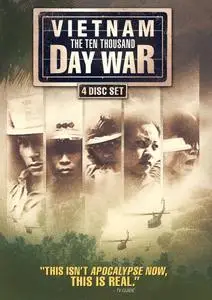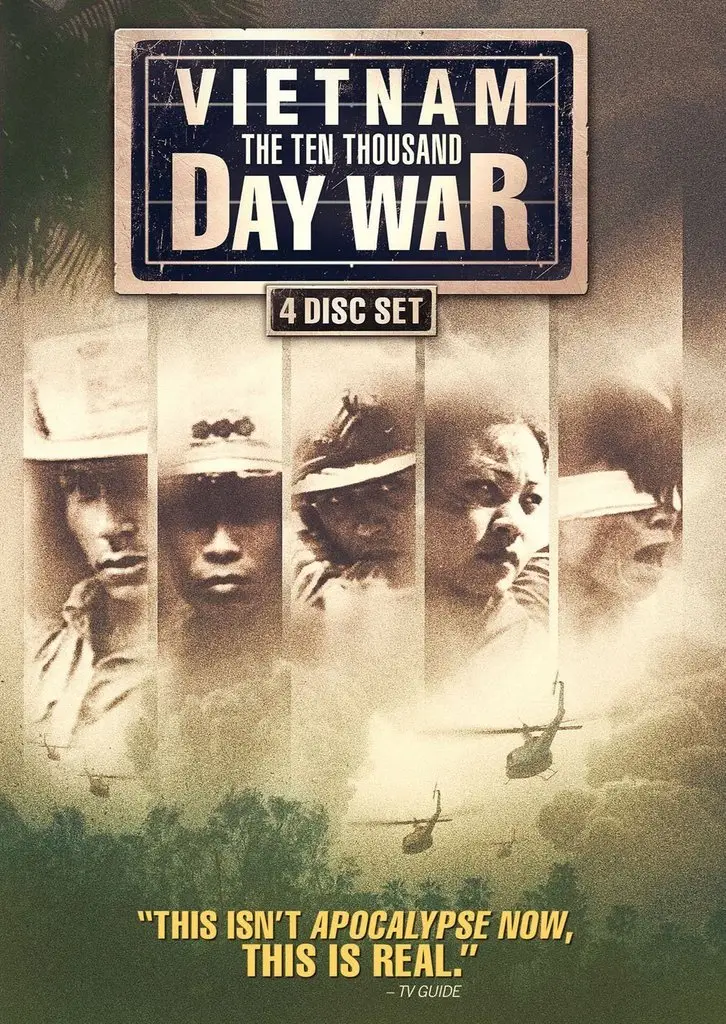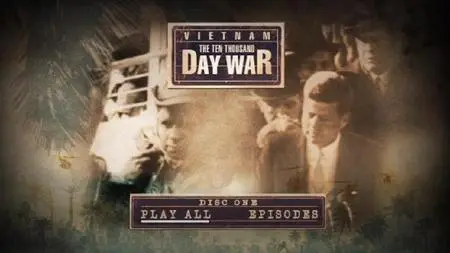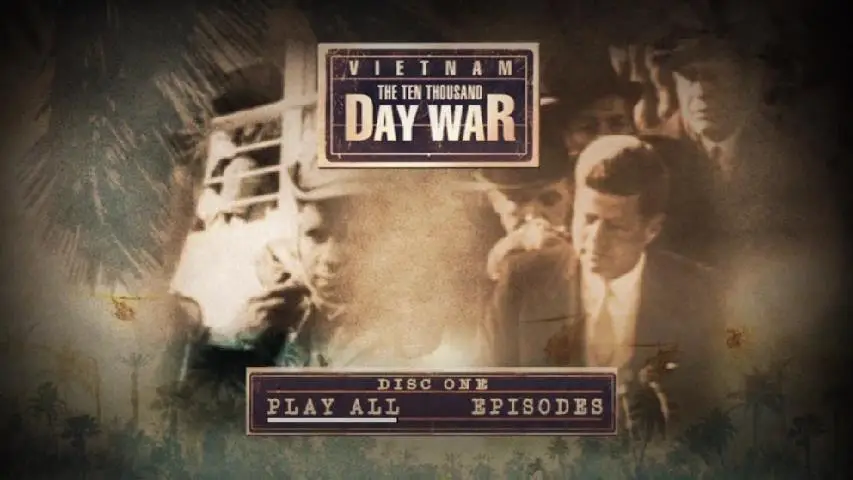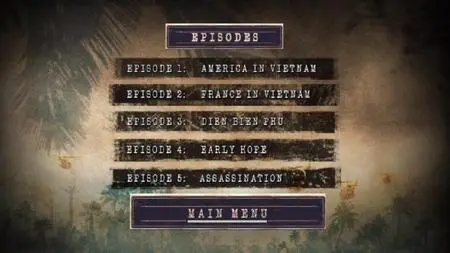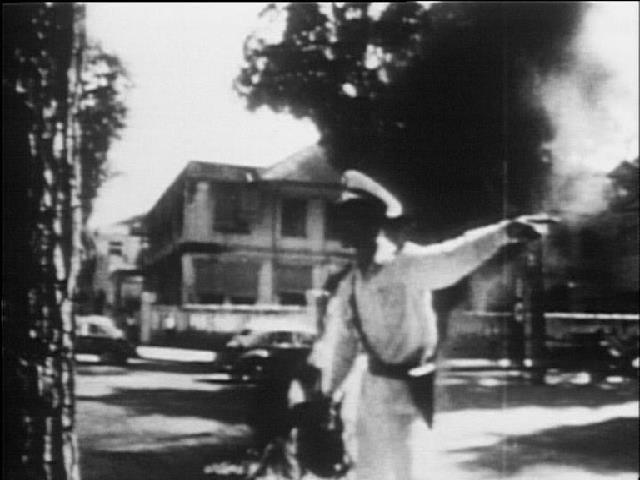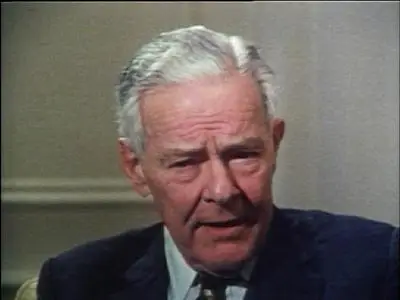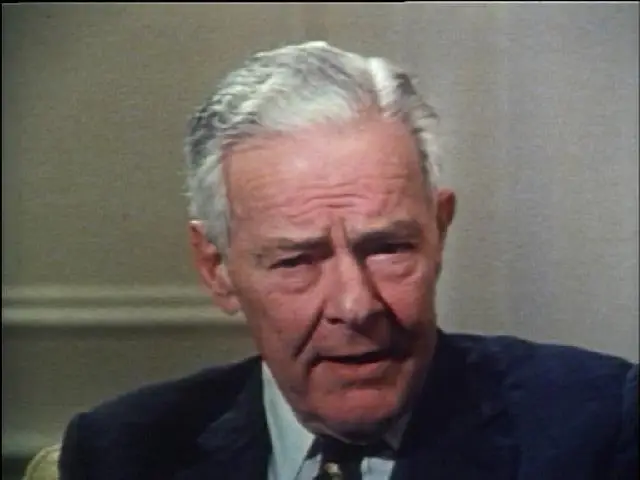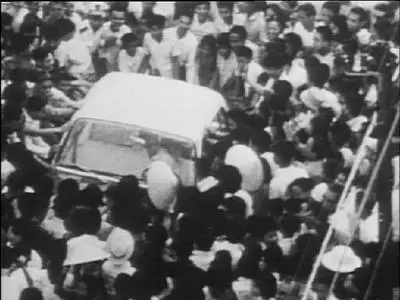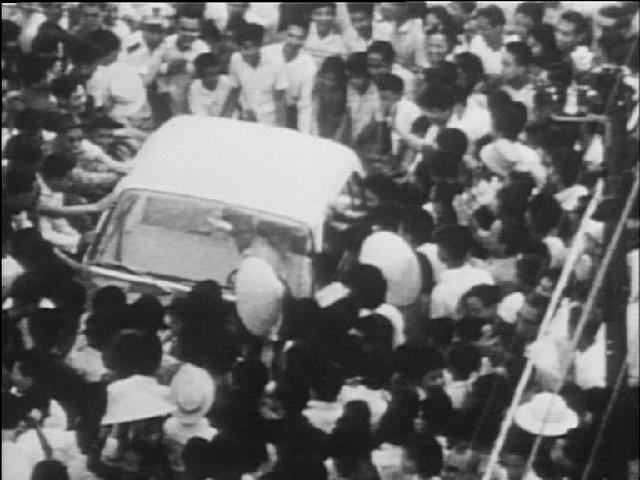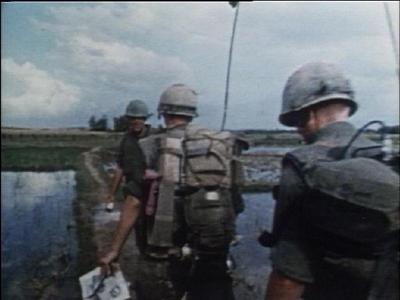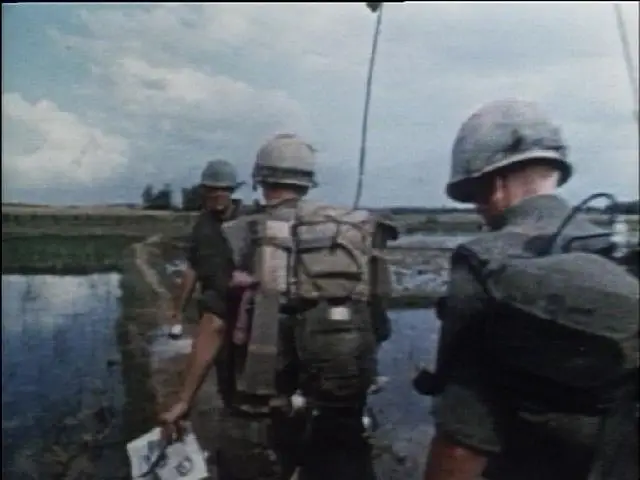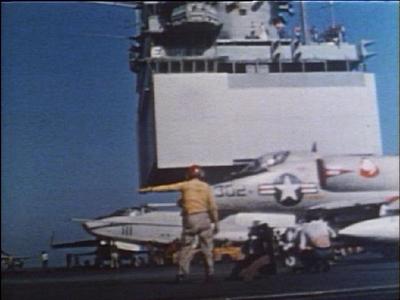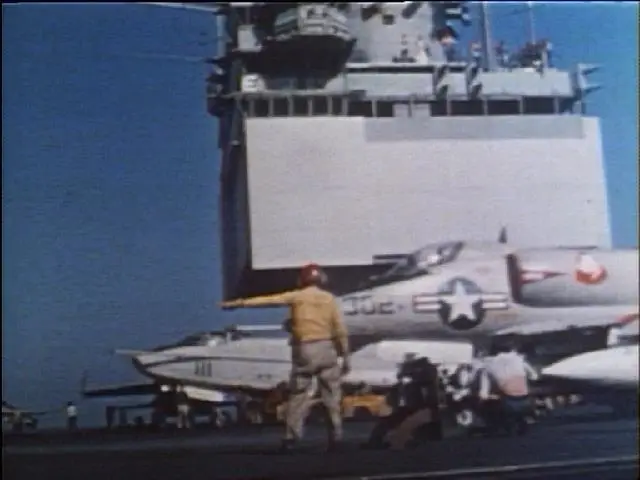Vietnam – The Ten Thousand Day War (1980)
DVD Video, 4 x DVD9 | 26 x ~ 0hr 25mn | NTSC 4:3 | 720x480 | 30.6 Gb
English: AC3, 2 ch, 224 Kbps
Subtitles: None
Genre: Documentary, History, War | TV Mini-Series
DVD Video, 4 x DVD9 | 26 x ~ 0hr 25mn | NTSC 4:3 | 720x480 | 30.6 Gb
English: AC3, 2 ch, 224 Kbps
Subtitles: None
Genre: Documentary, History, War | TV Mini-Series
Country: Canada
Stars: Joseph B. Anderson, Anthony Astuccio, Peter Braestrup
Vietnam: The Ten Thousand Day War, a 26-part Canadian television documentary on the Vietnam War, was produced in 1980 by Michael Maclear. The series aired in Canada on CBC Television, in the United States and in the United Kingdom on Channel 4. Maclear visited Vietnam during the production of the series and had access to film material there. He was the first Western journalist allowed to visit that area since the war. The documentary series was consolidated into 13 hour-long episodes for American television syndication. The series was released on videocassette format by Embassy and won a National Education Association award for best world documentary. Series writer Peter Arnett was an Associated Press reporter in Vietnam from 1962 to 1975. CBC aired only 18 of the episodes during the 1980-81 season because the series production was incomplete. The remaining episodes were broadcast during CBC's 1981-82 season. British audiences saw the series during Channel 4's 1984-85 season.
Episodes:
-Episode 1. America in Vietnam
This first episode focuses on American involvement in South-East Asia (Indochina) from US support for Ho Chi Minh during World War II. Proceeding through Ho Chi Minhs Declaration of Independence from France in 1945. To the withdrawal of troops and the suspension of air support in '72, and the belated final withdrawal in '75. It closes with President Ford declaring that for Americans, "the war is over"
-Episode 2. France in Vietnam
Episode Two covers the start of the Vietnam War. American support for and training of the Viet Minh, American participation fighting the Japanese occupation. The French Army, against the communist Viet Minh. Ho Chi Minhs plans for the eventual freedom of his country. France's plans to retain it's Indochina colony post WWII with occasional uprisings against it. France's brutal rule over the territory. American indifference and eventual support for France. The US finances 80% of France's war with the Viet Minh.
-Episode 3. Dien Bien Phu
Episode Three, covers the battle of Dien Bien Phu, the final battle in the French Indochina war. Dien Bien Phu is on the northwestern border with Laos, it is just within range of French aircraft which was the only link to the rest of the world. General Giap decides to attack and wipe the french forces out. 55 days later the Vietminh win the battle. 10,000 french troops surrender and only 5,000 survive the march into captivity. French Indochina is dead.
-Episode 4. Early Hopes
Episode Four covers the formation of South Vietnam. Over 1,000,000 people emigrate to the south and only 100,000 emigrate north. Ngo dinh Diem becomes the first elected president of South Vietnam but rules like a dictator. President Eisenhower calls Vietnam a "Bulwark" against communism in Asia. 1959 The north decides to retake the south by military force, and a guerrilla war is launched. Corruption spreads in the south, the government becomes oppressive. By 1963 there are 16,000 "Advisors" leading the S Vietnamese army with more on the way. By the end of 1964 there …
-Episode 5. Assassination
Episode Five, covering Bhuddist complaints of government corruption leading to riots, five monks self-immolate in protest. Henry Cabot Lodge arrives as ambassador to try and restore unity with Washington. Discussions happen between Washington and the Souths military that the US would not stand in the way of a coup. The CIA comes to Vietnam to try to pressure for governmental reforms without influencing any coup. Eventually Washington sends a message approving a coup the generals request confirmation that the US would still support Vietnam if a coup happened, the …
-Episode 6. Days of Decision
Episode Six chronicles LBJ's decisions to bomb the north and send US combat troops into the south. South Vietnam is given weapons and the most advanced equipment available and American personnel to operate it. 1964, the US Airforce starts flying secret bombing missions out of Laos and Cambodia. For six weeks secret CIA naval missions were being run into North Vietnam in the lead up to the Gulf of Tonkin incident. North Vietnamese gunboats had attacked a US Navy destroyer operating in the gulf of Tonkin, the next day, two destroyers entered the gulf and it was reported…
-Episode 7. Westy's War
Episode Seven chronicles the tactics and strategies used by General William Westmoreland. LBJ calls the war the most complex war ever fought. The overall US strategy is a war of attrition kill as many enemy as possible. March 1965 the first US combat troops arrive in Vietnam. South Vietnam is losing the war, it has a 500,000 man army, but it was poorly lead and motivated. By the end of '65 the north controls the country and the south the cities. Westmoreland's tactics are "Search & Destroy" The north's tactics were to "Ambush" the better trained and equipped Americans…
-Episode 8. Uneasy Allies
Episode Eight covers the society in the south during the war. Saigon is a party town. American aid pours into the country, fight during the day live it up at night. in 1965 Premier Ky is in power, the 10th government in 20 months and Americans feel they have a solid ally finally. Ky goes to meet LBJ in Washington to obtain more economic aid. LBJ enthusiastically agrees. Within a month Vietnam has an operating TV station to promote social reforms to the population. The US commits $750,000,000 in aid to Vietnam. Vietnam is corrupt, much of the aid provided goes straight…
-Episode 9. Guerilla Society
The ninth volume of The Ten Thousand Day War covers North Vietnamese society at war. Being at war for 30 years, the people of the north develop a Guerrilla society. Everyone is a combatant and a member of the army or the citizen militia. During the bombing campaign, where the US drops four times as many bombs as it dropped during the entirety of WWII, Northern cities and town move underground completely to escape the bombing. Women are an integral part of the defense society they work the fields during the day, go to school at night, all the while carrying their gun …
-Episode 10. The Trail
Episode Ten covers the creation of the Ho Chi Minh Trail. Created in 1959 when the north decides to fight, it stretches from the ocean just north of the 17th parallel to the Mekong delta in the south. A collection or network of footpaths and animal trails would take six months to traverse from north to south. By the end of the war it had been improved to dirt roads with filling stations and repair depots and traversing it takes six weeks by truck. US forces tried to cut this by extensive bombing but failed. It was thought to difficult to launch a land attack estimated…
-Episode 11. Firepower
Episode Eleven covers the application of military hardware on a massive scale from artillery to bombing. Is the capacity to hit hard and fast, the helicopter came into its own in warfare. the US army was capable of moving a Battalion at any time they needed to by air, and in just a few minutes a couple of battalions if needed. heavy lift helicopters established artillery fire bases in a half a day. recon teams could be drooped into the midst of their territory and patrol back to home. called air mobile warfare. Firepower wins many battles but does not win the war.
-Episode 12. The Village War
Episode Twelve covers the war for the hearts and minds of the Vietnamese peasantry. Without their support you will not win the war. Cooperation with one side brings destruction from the other. Some policy makers in Washington think that the war should be fought politically, Not militarily. The Vietcong use selective assassination as the first step in taking control of a village. The US doctrine is one of "Pacification" they go into a village and search, if they find evidence of Vietcong affiliation they evacuate the village and burn it to the ground. The North …
-Episode 13. Air War
The Thirteenth volume of The Ten thousand Day War covers the air war, the US main strategy in stopping the North's advance into the South. Surgical Bombing was the starting theory we would warn the North of what we were going to bomb. Use of the US ability to deliver bombs was controlled and directed directly by the White House under the supervision of the president himself, yes President Johnson actually picked the targets and the munitions applied to them. Various types of bombing strategies are attempted but all fail in their objectives. In 8 years of bombing, the …
-Episode 14. Siege
Episode Fourteen covers the January-March '68 battle for Khe Sanh during the Tet Offensive. Located in the northwest corner of South Vietnam. Khe Sanh is a forward patrol base used to mount search and destroy missions. The Viet Minh forces surround the base and establish artillery positions to shell the base and airfield. For every shell the Viet Minh send into the base the Marines send several back. The North equates Khe Sanh with Dien Bien Phu except that the Americans have complete air superiority and four times the artillery than the Viet Minh have. Westmoreland …
-Episode 15. Tet!
Episode Fifteen covers the Tet Offensive. January '68, The Viet Cong attack throughout the country all at once. Almost every US installation sees some sort of assault. Television brings the attack to the living rooms of every American household. Two years since the involvement of ground troops in the war, the prevailing opinion was that the US was winning the war. The North decides to attack. 80.000 Viet Minh troops infiltrate the south led by the South Vietnamese communists known as the Viet Cong. They even penetrated the US embassy and set it afire. 4,000 Northern …
-Episode 16. Frontline America
Episode Sixteen covers American society from late '67 forward. This period involves some of the most violent dissent in America since the Civil War. October '67, the march on the pentagon brings together the all the factions of the anti-war movement in a huge protest march. The administration views the protesters as political shills in support of communism. The peoples view was that we were indiscriminately bombing anyone and everyone, the television images every night of the destruction in Vietnam bring home the fact that what the government was saying about the war …
-Episode 17. Soldiering On
The Seventeenth volume of The Ten Thousand Day War examines 1969 the period of peak military involvement in Vietnam. The troops have a breakdown in discipline and moral. Drug abuse becomes rampant. With occasional outbursts of rebellion against authority. the GI's slogan becomes, "Don't be the last GI killed in the war" The average age of an American Soldier in WWII was 26, In Vietnam it was 19. It was a war with no clear objective, no clear mission. For the troops, it was a situation of survival, don't do anything to get yourself killed, you have a year to serve and …
-Episode 18. Changing the Guard
Episode Eighteen emphasizes Vietnamization. President Nixon's policy of having the South fight their war on their own with US assistance instead of Americans fighting it for them. ARVN forces reactivate the Khe Sanh base and use it to invade Laos to destroy an enemy supply base. What they didn't realize that they were outnumbered 2-1. The mission was an abject failure. Vietnamization was a return to Kennedy's policy of "It is their war to win or lose" All Southern males are conscripted into the army and hurriedly trained. The US begins to upgrade the Souths army with …
-Episode 19. Wanting Out
Episode Nineteen covers demands in America that we get out of Vietnam. February '69, Nixon is sworn in as president. He sets about trying to build a national consensus on the war and what we should do, he ignores the protesters. He settles on a process of negotiate but continue the fight until an honorable withdrawal is possible. North Vietnam continues with the same policy and pushes another 100,000 troops into the south. Nixon orders a secret bombing campaign from Cambodia in retaliation. There is public uproar of these raids. Nixon proposes that both sides withdraw…
-Episode 20. Bombing of Hanoi
Episode Twenty covers the December Bombing of Hanoi. America's last offensive act in Vietnam, Nixon is trying to force a peaceful resolution to the war, but Hanoi delays. The first B-52 mission of 101 planes carrying over 100 bombs apiece drop them over Hanoi. Sam missiles bring down three B-52's. The next day they fire over 200 missiles and bring down none. The next day was a night mission, they again fire over 200 missiles bringing down 6 B-52's, It was called our darkest hour. After day four, total US losses was 9 B-52's and four F-111 bombers. Hanoi is almost …
-Episode 21. Peace and Consequence
The Twenty-first volume Is an overview of the history so far in the series, recapping the final American involvement in Vietnam. The bombing campaign, the negotiations for peace in Paris and the agreement to end American involvement. Essentially giving the North everything they had originally asked for except the removal of the South's President from office, It does mention Nixon's two trips, one to Moscow and the other to Beijing and improved relations with the two superpowers as the impetus to get out of the south. The South views the agreement between the North and…
-Episode 22. The Prisoners
Episode Twenty-two covers the more than 600 American airmen shot down and captured by the north during the war. Most pilots eventually arrive at the "Hanoi Hilton" an old french prison. Some airmen stayed their for eight years. The prisoners state that they were seldom tortured but the US government insists that 55% of the prisoners were tortured in some fashion. Some of the prisoners felt that they would never get out, after the bombing stopped in '69 the pilots didn't know if they would ever go home. After '69, the treatment of the prisoners improved greatly but …
-Episode 23. The Unsung Soldiers
Episode Twenty-three covers the return of the soldiers to the US, it was a silent return, very unlike the return from all previous American wars. 57,000 dead, 150,000 wounded, it is estimated that over half a million have emotional problems. The majority of Vietnam veterans return to a normal life. All are scarred by the war, they feel that their service is unrecognized cause the public would like nothing better than to forget the war. The war is never over for the boys that served, Many went to war under the ideal of an American dream, A result of WWI, WWII, and …
-Episode 24. Final Offensive
Episode Twenty-four covers the end of Ho Chi Minh's war. January 1975, two years after the American withdrawal, the great final offensive is about to begin. The North plans for a two year long fight to retake the South, but it is over in 55 days. The almost one million man south Vietnamese army that the Americans left behind has dwindled. The billions of dollars of supplies left in place for the defense of the south are gone, stolen, sold on the black market, or just plain stripped and left to rot. Desertions reach 5,000 men per day. A few units fight and fight well …
-Episode 25. Surrender
Episode Twenty-five covers the final seven days of the Vietnam war, the battle for Saigon and the surrender of the south. The Norths troops launch a five pronged attack on Saigon. Once Thon Son Nhut airbase is closed by shell fire and the eastern bridges into the city are captured the evacuation begins. Since the airport is closed the only way out is by helicopter from the roofs of the government buildings. The rich Vietnamese had already escaped weeks earlier. All that was left was the government officials and US officials. The US officials order the evacuation by …
-Episode 26. Vietnam Recalled
The Twenty-sixth and final volume of the Ten Thousand Day War covers the legacy of the Vietnam war from both sides. Remembrances from the veterans, units called up to serve. In the heartland of America, opinions of the war is asked and reported, many say that the war just wasn't worth what it cost. Relatives who wonder what the hell happened to their loved ones and never get an answer, the politicians and directors of the war try to explain what happened and why we lost by justifying their decisions. Former soldiers wondering if it was all worth it. Images from …
Extras:
- None
Thanks to original uploader


